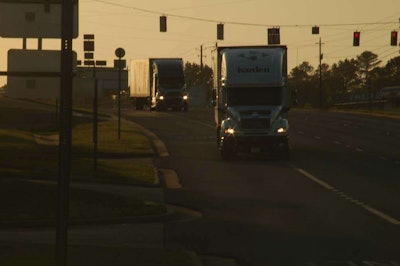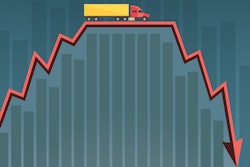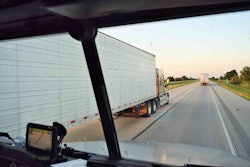
Amid a bevy of otherwise concerning stats of late, the American Trucking Associations last week reported that trucking revenues in 2018 skyrocketed — jumping nearly 14 percent from 2017. ATA Chief Economist Bob Costello reported last week that trucking industry revenue in 2018 was $796.7 billion, a gain of nearly $100 billion from the year prior, calling 2018 a “year of dynamic growth.”
Despite 2018’s surge, indicators for 2019, especially of late, appear somewhat bleak.
Truck orders in July hit their lowest point in 9 years — the near-bottom the Great Recession. The preliminary July figures, reported last week by FTR, were the latest in a string of slumping truck orders. “Fleets continue to take a wait and see approach to 2020 equipment,” said Jonathan Starks, FTR chief intelligence officer. “Potentially higher equipment costs, uncertain demand, and enough available capacity in the market are keeping order activity at bay.”
Rates and freight demand have been soft, and recently published data on 2019’s second quarter reaffirm that.
FTR this week issued a brief noting that freight demand is weaker than the general economy. Though GDP growth in the second quarter was 2.1 percent, the components of GDP linked to goods transportation was much weaker — just 0.5 percent on an annualized basis, says FTR.
The goods transportation sector grew at 3.2 percent in 2018 and 5.7 percent in 2017.
“It’s a slow growth environment now, but it feels worse than that because the freight markets were so extraordinarily hot in 2018,” said Eric Starks, FTR’s chairman and CEO. “However, while freight volumes are holding up as of now, most of the risks seem to be on the downside, especially with tariffs and the overall trade climate.”
Construction is weak and the manufacturing sector is showing “mixed signals,” says Eric Starks.
Consumer spending is holding strong, he says, but weather events, such as flooding in the Midwest, likely harmed grain volumes.
“After a couple of years of constant pressure on the transportation system we’re just in a more volatile and dynamic environment that requires shippers, carriers and intermediaries to be especially vigilant.”









